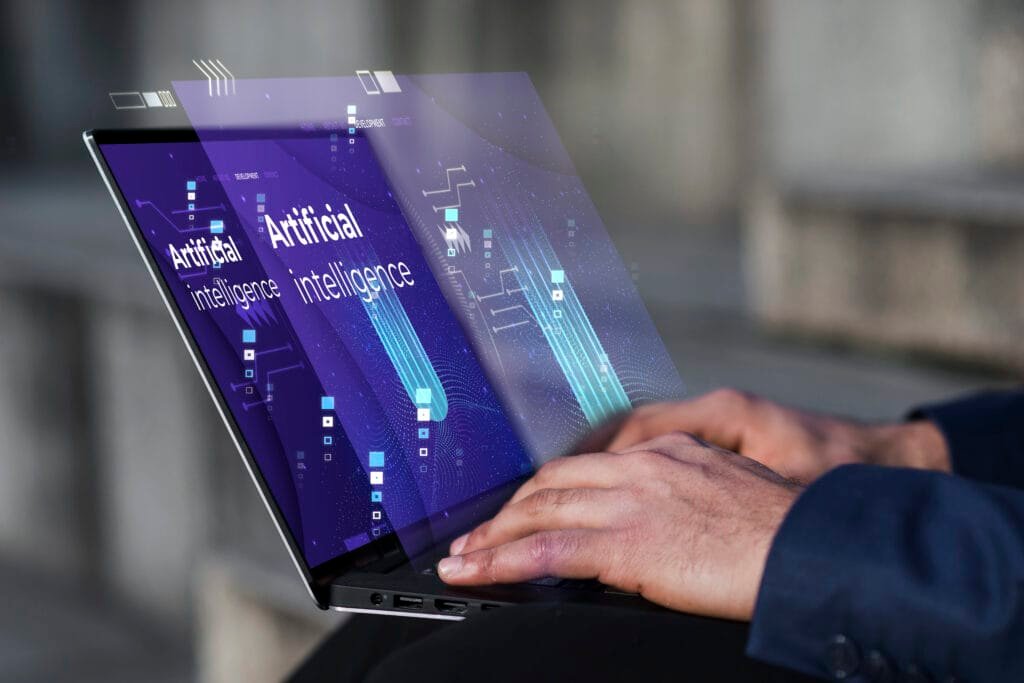Level Up Your Defense- NSE2 Endpoint Security Strategies for Today’s Threats!
Protecting your systems and data is more important than ever in the modern digital world through NSE2 endpoint security. Proactive action is necessary in light of the increasing sophistication of cyber threats, particularly regarding endpoint protection. As NSE2 (Next-Generation Endpoint Security) develops, having a strong defensive plan is essential to successfully reduce risks.
Understanding the Significance of Endpoint Security
Endpoint devices are possible locations of entry for cyber attacks in an increasingly interconnected world. By putting advanced protections in place, NSE2 Endpoint Security seeks to strengthen these entry points and provide complete protection for all networks and devices.
Importance of NSE2 Endpoint Security
The increasingly complex threat landscape is beyond the reach of traditional security solutions. NSE2 offers a comprehensive strategy that addresses vulnerabilities and immediately reduces risks.
Foundations of NSE2 Endpoint Security
Endpoint security, which focuses on protecting devices like laptops, desktops, mobile phones, and servers, is the first defense against cyber threats. Studying the fundamentals of NSE2 Endpoint Security includes exploring its essential elements and the guiding theories that determine its effectiveness.
Definition and Components
Endpoint security, which focuses on protecting devices like laptops, desktops, mobile phones, and servers, is the first defense against cyber threats. Studying the fundamentals of NSE2 Endpoint Security includes exploring its essential elements and the guiding theories that determine its effectiveness.
- Firewalls: By monitoring and regulating incoming and outgoing network traffic, they serve as barriers between a reliable internal network and unreliable external networks.
- Antivirus Software: Antivirus software is made to identify, stop, and remove malicious programs, or malware, from networks and devices. This includes Trojan horses, worms, and viruses.
- Intrusion Prevention Systems (IPS): By proactively detecting and preventing possible threats or intrusions, these systems stop vulnerabilities from being exploited.
- Encryption: Sensitive information is protected from unauthorized parties’ access and interpretation by encryption.
- Endpoint Detection and Response (EDR): Offers visibility into activities and quick response capabilities to provide continuous monitoring and defense against advanced threats that target endpoints.
Core Principles and Objectives
The fundamental principles of NSE2 Endpoint Security revolve around the following objectives:
- Detection: Quickly locating possible weaknesses and threats on all endpoints before they have an opportunity to cause damage.
- Prevention: Preventive measures are put in place to prevent cyberattacks before they have a chance to enter the security perimeter.
- Response: Put strong plans in place to minimize damage and recovery time by efficiently minimizing and containing problems when they occur.
- Adaptability: Constantly changing tactics and technologies to counter new and developing challenges.
- Comprehensiveness: Providing all-encompassing security across all endpoints while taking user behavior, networks, and devices into account.
NSE2 seeks to offer a complete security ecosystem that adapts to the ever-evolving threat landscape in addition to securing devices. Organizations can achieve considerable improvements in their defenses against modern cyber threats by following these fundamental guidelines and utilizing a range of components.
Challenges in Contemporary Threats

The environment of cyber threats has changed dramatically, posing a wide range of difficulties that are difficult for conventional security solutions to successfully address. It is vital to understand these obstacles to develop strong methods related to NSE2 Endpoint Security.
Diverse Attack Vectors
Modern cyber threats no longer follow a single attack strategy; rather, they use a variety of vectors to break into systems in different ways:
- Phishing Attacks: Phishing emails or messages deceive users into installing malware or revealing private information.
- Malware: Ransomware, spyware, viruses, and other ever-evolving kinds of malicious software threaten system confidentiality and integrity.
- Zero-Day Exploits Attacks that take advantage of security holes before updates are released, aiming for vulnerabilities that software vendors are unaware of.
- Social Engineering: Social engineering is the practice of manipulating people into giving up private information or unwanted access by manipulating their psychology.
- Supply Chain Attacks: Using the chain’s vulnerabilities as a point of indirect system infiltration.
Sophisticated Threats and Vulnerabilities
Traditional security solutions are severely challenged by the sophistication of today’s threats:
- Advanced Persistent Threats (APTs): Advanced Persistent Threats (APTs) are persistent, targeted attacks that use clever strategies to stay hidden in systems for long periods.
- Evasion Techniques: Cybercriminals utilize these strategies to get around security measures. One such strategy is polymorphic malware, which modifies its code to evade detection.
- IoT Exploitation: As linked devices expand, vulnerabilities are introduced that can be used to access networks and private information.
- Rapidly Evolving Tactics: Traditional security solutions find it difficult to keep up with threat actors’ rapid adaptation, which involves the use of new tools and approaches.
To effectively manage these issues, businesses must implement a multi-layered, proactive strategy that is integrated into NSE2 Endpoint Security. To anticipate, detect, and neutralize these constantly changing cyber hazards, a complete strategy beyond traditional protection is necessary due to the complex nature of threats.
Strategies for Advanced Endpoint Security

Using modern strategies is essential in the field of NSE2 Endpoint Security for improving defenses against the changing threat landscape. To ensure thorough security across all endpoints, these solutions use cutting-edge technologies and a multi-layered strategy.
Implementing Multi-Layered Defense
A robust defense system comprises multiple layers of security, each contributing to the overall resilience:
- Network Security: Network security is the process of securing network traffic and preventing unwanted access by deploying firewalls, intrusion detection systems, and virtual private networks (VPNs).
- Application Control: Keeping an eye on and managing the programs that are installed on endpoints to reduce the possibility of harmful malware being executed.
- Endpoint Detection and Response (EDR): Using EDR solutions to provide real-time threat detection and remediation while continuously monitoring and reacting to suspicious activity.
Through the combination of these approaches, enterprises may create a robust security framework within NSE2 Endpoint Security. In addition to improving threat detection capabilities, the combination of various defensive layers and behavioral analytics also enables proactive risk mitigation.
Adapting to the NSE2 Framework
A paradigm shift in endpoint security is embodied in the NSE2 (Next-Generation Endpoint Security) framework, which places a strong emphasis on proactive defenses and comprehensive threat management. It is necessary to have a thorough comprehension of this framework’s methodology to adjust organizational strategies.
Understanding NSE2’s Approach
- Proactive Threat Hunting: NSE2 emphasizes proactive detection of possible threats instead of depending exclusively on reactive measures, allowing for the taking of preventive measures against developing dangers.
- Threat Intelligence Sharing: To improve threat visibility and response capabilities, security teams and external sources should be encouraged to collaborate and share information.
- Continuous Monitoring: Using real-time analysis and monitoring to quickly identify and address risks, therefore closing the window of vulnerability.
Organizations must adopt NSE2’s proactive and collaborative approach by incorporating its fundamental concepts into their security plans. Businesses can improve their security posture, successfully fend off contemporary attacks, and maintain their competitive edge in the cybersecurity market by adhering to NSE2 rules.
Best Practices for Effective Defense
Within the NSE2 framework, ensuring strong endpoint security requires implementing best practices that extend beyond simple technology fixes. It combines technological solutions with user-centered strategies to enhance defenses and successfully reduce hazards.
Regular Updates and Patch Management
- Software Updates: Installing software patches and updates on time fixes known vulnerabilities and reduces the possibility that hackers may take advantage of them.
- Firmware Updates: Patching security flaws and strengthening device defenses against new threats require updating the firmware on all devices.
Employee Training and Awareness
- Security Awareness Programs: Teaching staff members about common attack techniques, such as phishing, and safe online conduct and practices.
- Phishing Simulations: Training staff members to identify and steer clear of phishing efforts and improving their defenses against social engineering assaults through the use of simulated phishing exercises.
Organizations may improve their overall security posture within the NSE2 framework by providing staff with the necessary tools and expertise to recognize and address possible risks, as well as by fostering a culture of constant vigilance.
Integration of AI and Machine Learning in Endpoint Security

The landscape of endpoint security has completely changed as a result of the integration of AI and ML technologies, which provide enhanced capabilities for more effectively detecting and responding to ever-evolving threats.
Enhancing Threat Detection Capabilities
- Behavioral Analysis: To enable proactive threat detection, AI-powered systems analyze user behavior patterns to spot anomalies that might point to possible threats.
- Anomaly Detection: Machine learning algorithms are always picking up on trends in data, which helps them differentiate between genuine and questionable activity. This helps them identify threats more accurately.
By combining AI and ML, endpoint security solutions can move from a reactive to a proactive mode. These technologies help businesses anticipate and prevent possible cyber threats inside the NSE2 framework in addition to enhancing threat detection capabilities.
Creating a Comprehensive Incident Response Plan
An essential part of NSE2 Endpoint Security is an incident response strategy, which describes an organized procedure for addressing security events quickly and efficiently as they arise. A thorough plan reduces the impact of possible violations and ensures readiness.
Importance of Response Readiness
- Timely Mitigation: Organizations can minimize possible damage and reduce recovery times by quickly reacting to security issues when they have a well-defined plan in place.
- Containment of Breaches: Having a well-organized response strategy makes it easier to keep crises under control and stops them from getting worse and spreading throughout the network.
Steps for a Proactive Response
- Incident Identification: defining precise procedures for quickly identifying and classifying security events according to their importance and severity.
- Response Coordination: Assigning tasks and duties to members of the response team to ensure a well-organized and effective reaction to contain and lessen the situation.
- Communication Protocols: Establishing lines of communication to ensure accurate and timely information sharing inside the company and with other relevant parties.
Organizations may remain resilient in the face of security incidents by implementing an efficient incident response plan under the NSE2 framework. Organizations may reduce the impact of security breaches and quickly resume regular operations by defining clear protocols, roles, and communication channels.
Conclusion
NSE2 Endpoint Security acts as a lighthouse of protection against possible dangers in a digital environment that is always changing. Through the implementation of comprehensive plans, adherence to NSE2 rules, and use of modern technologies, businesses can enhance their defense mechanisms and protect their priceless resources from contemporary dangers.
FAQs
1. How does NSE2 differ from traditional endpoint security?
NSE2 goes beyond traditional antivirus approaches, incorporating advanced technologies like behavioral analytics and machine learning for proactive threat detection.
2. Why is employee training crucial for endpoint security?
Employees are often the weakest link in security. Training enhances their awareness, reducing the likelihood of falling victim to phishing attempts or other social engineering tactics.
3. What role does predictive analysis play in endpoint security?
Predictive analysis forecasts potential threats based on historical data, enabling proactive measures to prevent attacks before they occur.
4. How often should incident response plans be tested?
Regular testing ensures the readiness of incident response plans. Quarterly or semi-annual tests help identify weaknesses and refine strategies.
5. Can NSE2 guarantee absolute protection against all cyber threats?
While robust, NSE2 isn’t infallible. It significantly reduces risks but requires continuous adaptation to combat evolving threats effectively.







